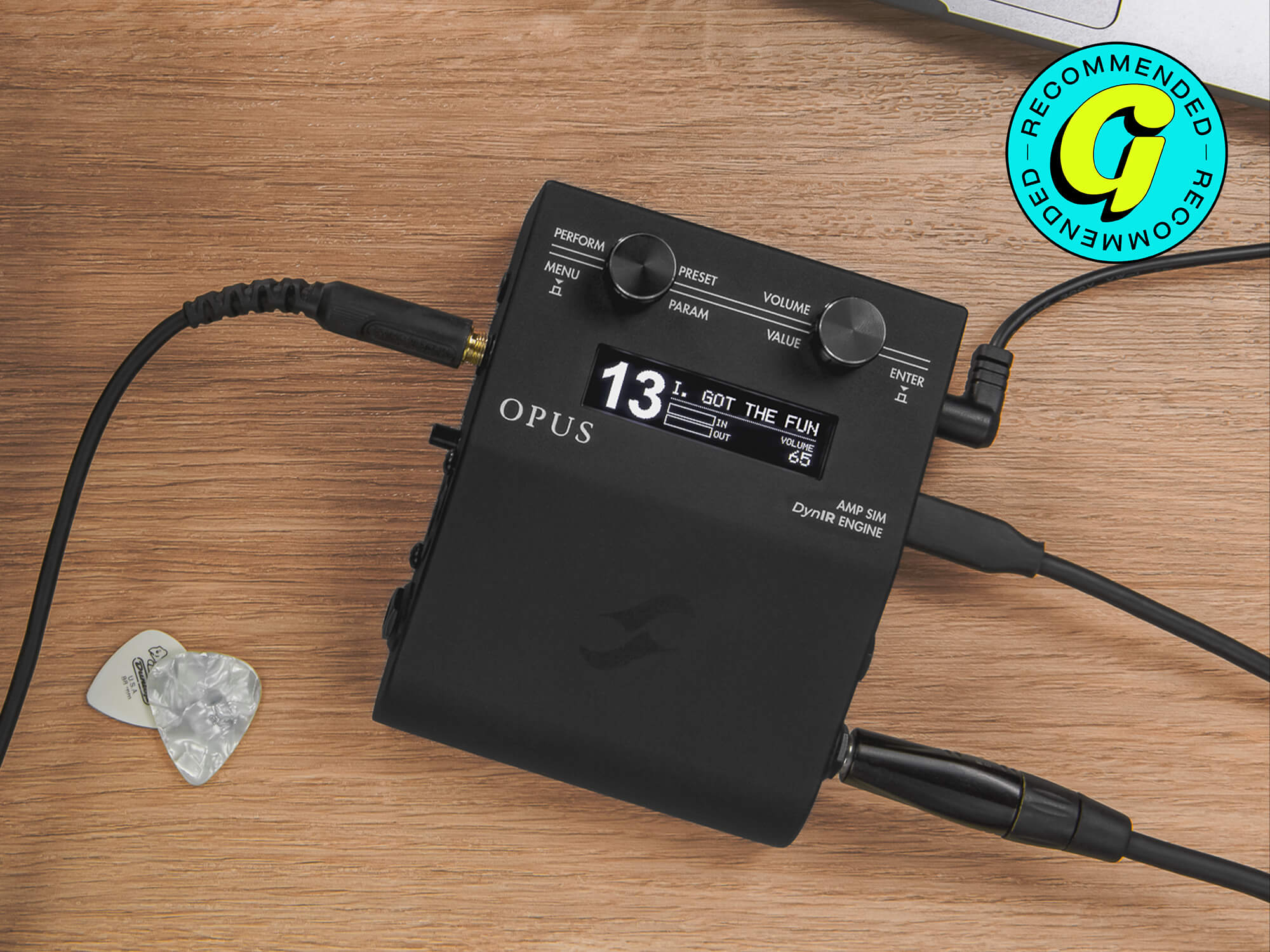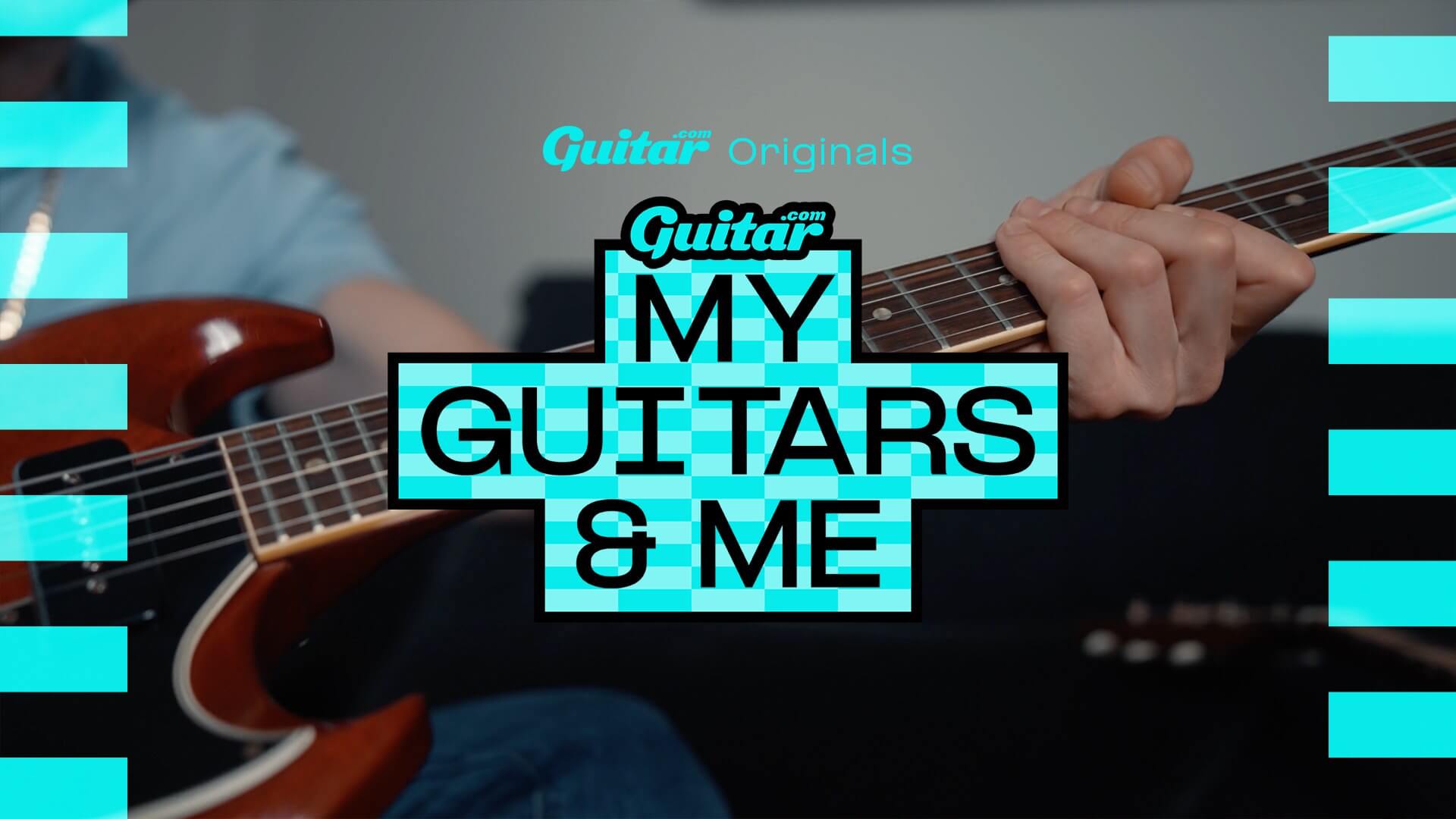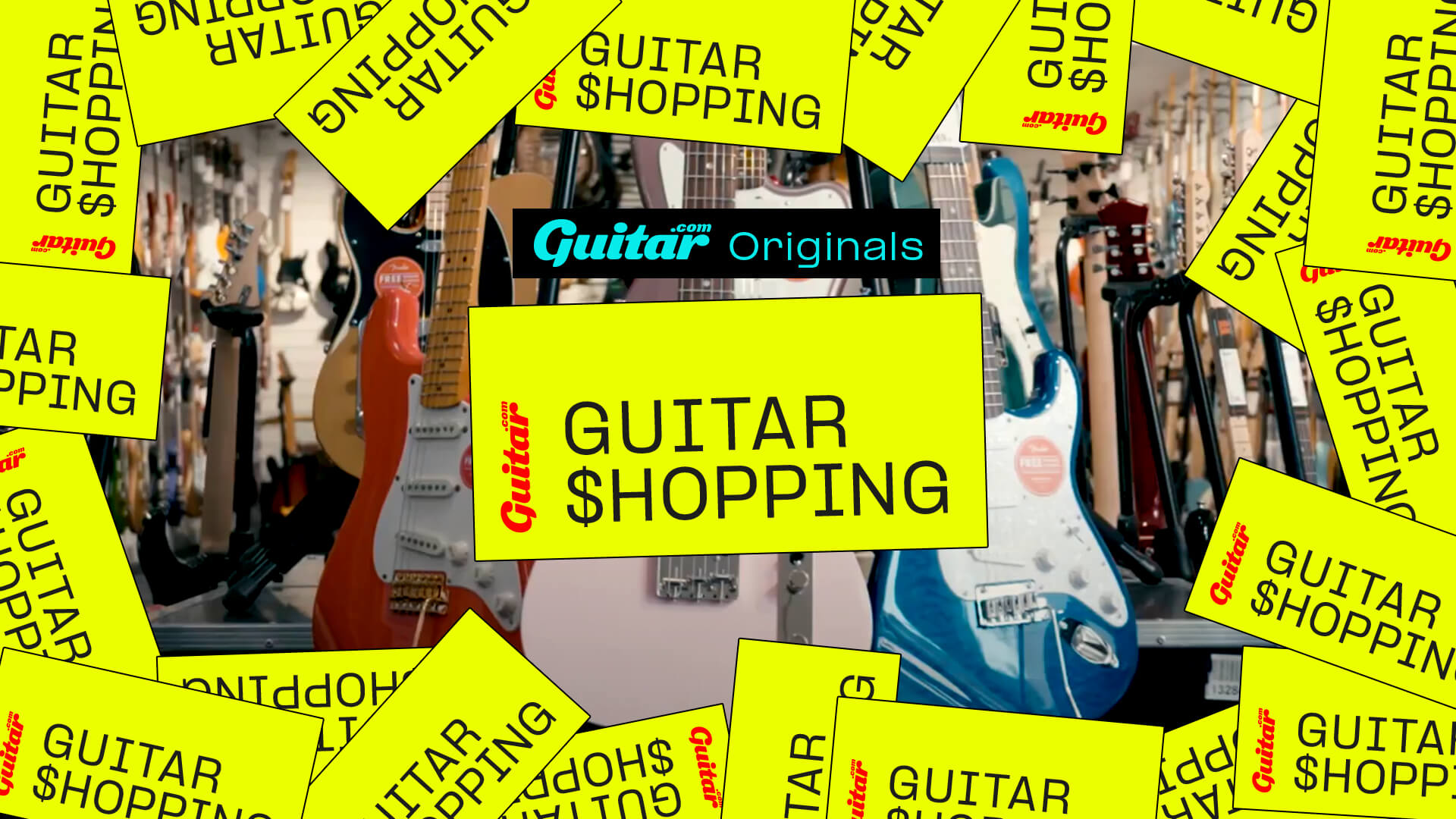Two Notes Opus review: the missing piece of your direct rig?
If you felt that C.A.B. M+’s amp model was a bit bland, the Opus now offers a range of five to spice up the pedal-platform proposition

Two Notes Opus. Image: Press
Review Overview
Our rating
9
Our verdict
£279 / $299, two-notes.com
Two Notes’ C.A.B. M+ was, and remains, a powerful piece of kit. While its wide range of customisable IRs was the focus, there was a bit of colour added in from an amp model based on a silver-panel Fender Bassman. But the goal there was clean headroom, letting pedals speak entirely for themselves. But what if you need something more?
That’s where the new Opus comes in. It takes a very similar approach to the C.A.B. M+, however there’s now a total of five preamp models alongside the library of virtual cabs and mics. These range from Fender-inspired cleans to the searing gain of a 5150, and there’s even a whole bass preamp thrown in too for you four-stringers.

What this is, and what this isn’t
The Opus is not a multi-effects, despite boasting display, amp models and IRs. It’s a distinction worth making because judging it against, say, a HX stomp would be unfair. It’s instead aimed at the same slot on your pedalboard as the Walrus ACS1, the Strymon Iridium, or Universal’s amp pedals. The heart of a direct rig, yes, but not its entire circulatory system.
Additionally, like the C.A.B. M+ products that came before it, the Opus is something of an active DI box too. While it can take any instrument-level signal and give you a balanced line-level signal, it can also spruce up an acoustic guitar with an IR if you’re so inclined.
To these ends it packs an extensive I/O into its small enclosure, with USB-C, eighth-inch MIDI, an aux-in and headphone out, XLR out, and a quarter-inch input selectable between line, instrument and ‘amp’ level. That last one is notable, as it means you can put the Opus between your amp head and your speaker cabinet, and apply a virtual cabinet to a real amp head. But “between” it must be, as there’s no speaker load in here – there’s a second jack to make sure you’re still impedance-matching.

The Sounds
For now, let’s plug straight in and see what the Opus can do. Starting with the biggest change since the C.A.B. M+: the amp models. We have the Foundry, Foxy, Albion, Nifty Fifty and Peggy preamps here, a Fender, Vox, Marshall, 5150 and Ampeg respectively.
All of them sound how you’d expect, and the quality of the modelling is on-point. There’s no real fizz to be heard on the higher gain settings, and a pleasing chimey quality to the cleaner sounds. Pedals work well, most importantly dirt pedals – you can of course run time-based effects after the Opus itself, but the Fender and Vox-inspired preamps still give delay repeats some lovely character.
The bass sounds are also really good, particularly some of the oversized fridge-style cabinets – plus you can get some real crunch from the Ampeg-inspired Peggy preamp, a welcome change for the token bass tones on units like this, which can occasionally be limited to completely clean sounds.
The preamps, however, aren’t the whole tonal equation – they come most alive when paired with the right power-tube emulations, which provide everything from the subtlest of compression to out-and-out saturation and sag. Here the feel of a good model of a tube amp is most evident, as there’s an indescribable something that just clicks when a power section is collapsing and compressing in just the right way. The Opus doesn’t disappoint in that regard.
Nor does it disappoint in the cabinet simulations. All of the stock cabinets are well-captured, and provide a lot of character. The proprietary DynIR format also offers extensive mic customisation, too, meaning there’s bound to be at least one sound you’ll like in every cab. Further tweaking can be done via a parametric EQ and reverb, which ranges from short slapback to big, washy plates.
None of the reverbs are mind-blowingly expressive, but that’s not the point of a unit like this: they instead do a great job of setting your virtual amplifier in a virtual space, be that a toilet or an empty concert hall. Again, a multi-effects this is not: it’s a live and recording tool meant to take the amp, cab and mic out of the equation.
On that note, now’s a good time to mention that you can choose where in the signal chain the line-out signal is taken from. You can even choose to have no processing at all, letting you use the XLR-output as if it was a separate rig entirely. It’s this kind of flexibility that gets the idea-gears whirring in your head for convenient and creative direct setups.

The UI
Using the OPUS on its own to build a preset is a perfectly fine experience – how the two rotary encoders work to move you around the small LCD screen is intuitive, and (unlike some products I could mention) the screen itself has a snappy response time and is quite easy to read, even from a distance and despite its size.
For a more immediate and full-colour overview of what’s going on, you can connect the Opus to a Torpedo Remote app. USB-C for your PC/Mac, Bluetooth for your smartphone. Both let you adjust everything about a preset, from the controls on the preamp to the cabinet models, mic positions and so on. Here things remain pretty seamless: the virtual knobs and sliders are responsive, and I experienced no connection troubles, even with Bluetooth, which for some other pedals can be drastically unreliable.
The desktop version of the Remote app – after logging in with a Two Notes account – also lets you download and import DynIRs from Two Notes’ website. Well, I say “download” – I mean “purchase”. This is really my only gripe with the desktop app – the default setting was for online DynIRs to be included in the list, and so when I loaded it up for the first time, I clicked onto the next cabinet and was immediately jumpscared with a popup. I didn’t own the cabinet I was trying to use, but I could if I wanted to. Did I want to be redirected to the Two Notes store to check out my basket? Not really, no – I had literally just plugged the thing in, purchasing more stuff wasn’t on the agenda. Thankfully, disabling this behaviour was easy, and I was back to browsing the cabinets on the actual device.
That’s not to take away from what is a useful and powerful piece of software, and despite the jumpscare, the ability to easily demo and load in even more cabinets from Two Notes’ huge library (or your own IRs) isn’t a bad thing. And, thankfully, Two Notes isn’t entirely relying on you having access to the app all the time – making on-the-fly adjustments on the Opus itself is entirely possible, which is reassuring if you’re planning to gig with the thing.

Overall
The Opus is, in many ways, an excellent value proposition. It has comparable functionality and sounds to units that cost $100 or so more, such as the Strymon Iridium or the Walrus ACS1 – not to mention a much broader library of cabinets. The only thing it really lacks compared to them is stereo functionality. But, if you’re building a direct rig and you’re happy staying mono, the Opus will not disappoint. Not only does it boast a flexible I/O, a large (and expandable) library of cabinet models and preamps, it’s also just a user-friendly thing in general, and will make setting up any number of direct rigs a breeze.
Find out more at two-notes.com.



